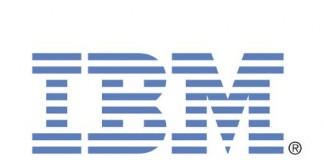Last year, in October, Axoni and Thomson Reuters partnered with seven other firms, including financial institutions and technology vendors, to implement a blockchain solution to synchronize post-trade life cycle management of equity swaps. The project used blockchain to reduce costs in addition to giving insight into how commercial models of financial data providers can evolve to work in distributed ledger networks. Thomson Reuters joined NEX Group, Wells Fargo, J.P. Morgan, Goldman Sachs and others as equity investors in Axoni’s most recent round of financing.
Thomson Reuters has been collaborating with both customers and innovators to explore proofs-of-concept and benefits of reduced cost, increasing efficiency, simplification from reducing the complexity of multiple ledgers and databases, synchronization of data, reducing errors, greater security and better accessibility to records.
In partnership with Axoni, a distributed ledger specialist firm serving financial institutions and capital markets service providers, Thompson Reuters demonstrated how blockchain technology and smart contracts can manage affirmations and post-trade, life-cycle processing for over-the-counter equity swaps. It demonstrated the speed and cost advantages of using a permissioned, distributed, peer-to-peer blockchain network to handle the complex post-trade events inherent to equity swaps – including mark-to-market calculations, margin payments and corporate-action processing.
The initiative, including Barclays, Citi, Credit Suisse, J.P. Morgan, IHS Markit and Capco, a global financial services management consulting firm that is part of FIS, tested automated life-cycle management; synchronization of single-stock, index and portfolio swaps; and critical aspects of deploying and managing the distributed ledger network
Joyce Shen, Global Director of Emerging Technology Partnerships and Investments at Thomson Reuters, remarked: “Collaboration among our clients and partners demonstrates the best in co-innovation, where each of us plays a critical part in advancing the possibilities for this emerging technology. This has exciting potential for workflows in the capital markets.”
In the tests, blockchain tech generated smart contracts from simulated legal confirmations sourced from MarkitSERV or trades submitted by dealers on the distributed network. This created a synchronized, ‘golden’ record of each transaction. Economic terms, as well as computational logic to manage event processing and payment calculations based on market events, were embedded in those smart contracts. Thomson Reuters integrated Thomson Reuters BlockOne™ ID for Ethereum™ with specialized software from Axoni to provide valuations, as well as trusted market data including equity prices, LIBOR rates and corporate actions, directly on the blockchain. This enabled the smart contracts’ automated workflows.
CEO of Axoni, Greg Schvey stated: “Complex contracts, a distributed market structure and replicated workflows across many parties make blockchain technology a natural fit for equity derivatives. Demonstrating this can be achieved on the same technology also used to optimize post-trade asset servicing for credit derivatives further proves the multiplicative value of deploying this infrastructure. It was a pleasure to work with influential and forward-thinking parties required to make this project impactful.”
Other investments in blockchain technology that Thomson Reuters has made include investing in Hijro, a financial technology start-up offering a cloud-based financial transaction network. The firm is disrupting and automating B2B payments, asset verification, financial wires, supply chain, contracts and settlements through distributed ledger technology and protocols. Thomson Reuters also invested in Funderbeam, a blockchain-based trading platform providing primary and secondary market liquidity to private growth companies.







